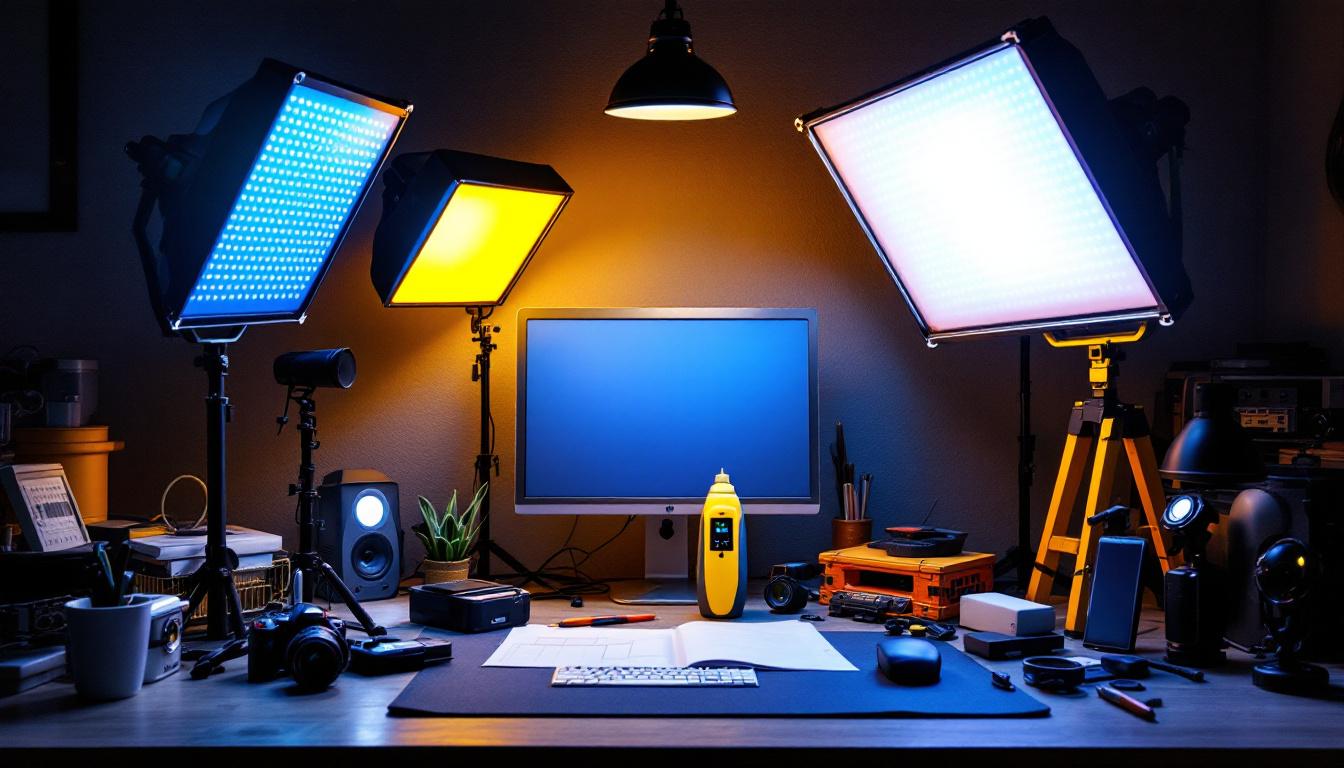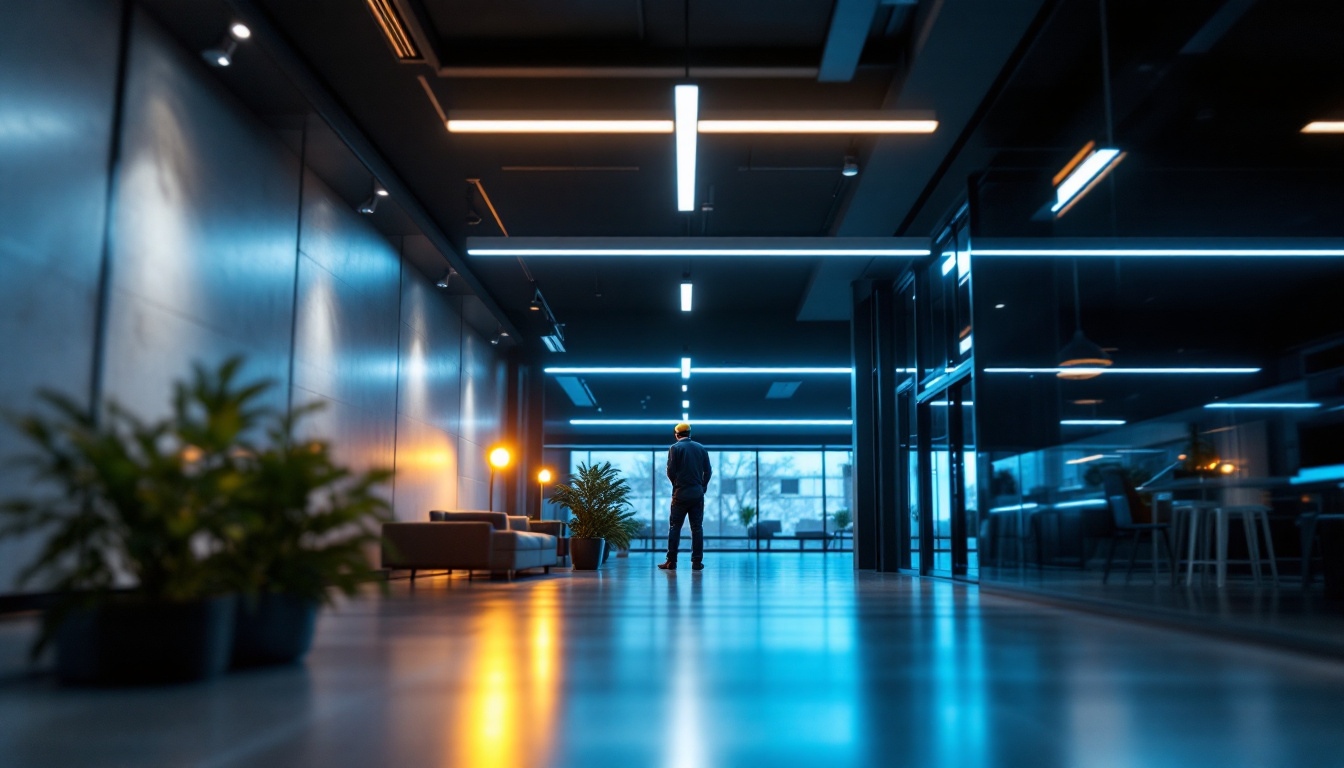
Lighting professionals are constantly seeking innovative solutions to enhance their projects, and LED lights for high hats are no exception. As the demand for energy-efficient and versatile lighting continues to grow, understanding the key elements of LED lights becomes essential for contractors. This article provides a comprehensive checklist for lighting professionals, ensuring that every aspect of LED installation is covered.
LED (Light Emitting Diode) technology has transformed the lighting industry with its energy efficiency, longevity, and versatility. Unlike traditional incandescent bulbs, LEDs convert a higher percentage of energy into light, resulting in reduced electricity consumption. This efficiency not only benefits the environment but also lowers operational costs for clients.
One of the most significant advantages of LED lights is their lifespan. While incandescent bulbs may last around 1,000 hours, LEDs can last up to 25,000 hours or more, depending on usage and quality. This longevity means fewer replacements and less maintenance, making them an attractive option for both residential and commercial applications. Moreover, the durability of LEDs is noteworthy; they are less prone to breakage compared to fragile incandescent or fluorescent bulbs, further enhancing their appeal in high-traffic areas or outdoor settings.
Additionally, LEDs are available in various color temperatures, allowing lighting professionals to create the desired ambiance for any space. Whether warm white for cozy settings or cool white for modern aesthetics, the flexibility of LED options is unparalleled. Furthermore, advancements in LED technology have led to the development of smart lighting systems that can be controlled remotely, allowing users to adjust brightness and color temperature according to their preferences, enhancing both convenience and energy savings.
Energy efficiency is a critical factor in today’s lighting choices. LEDs consume significantly less power than traditional lighting options, which not only reduces energy bills but also minimizes the carbon footprint of a project. This environmental consideration is increasingly important to clients who prioritize sustainability. In fact, studies have shown that switching to LED lighting can lead to a reduction in energy consumption by up to 80%, making a substantial impact on overall energy usage in homes and businesses alike.
Moreover, LEDs do not contain harmful substances like mercury, which is found in some fluorescent lights. This makes them a safer choice for both installation and disposal, aligning with environmentally-friendly practices. Additionally, the lower heat output of LED lights means they contribute less to heat buildup in indoor environments, reducing the need for air conditioning and further decreasing energy consumption. As cities and communities strive for greener initiatives, the adoption of LED technology plays a pivotal role in creating more sustainable urban landscapes.
When selecting LED lights for high hats, several factors must be considered to ensure optimal performance and compatibility with existing fixtures. The following checklist outlines the essential criteria to evaluate before making a purchase.
Understanding the relationship between wattage and lumens is crucial. While wattage indicates energy consumption, lumens measure the brightness of the light. For high hats, it is essential to choose LED lights that provide sufficient lumens to achieve the desired illumination without excessive wattage.
For instance, a traditional 60-watt incandescent bulb typically produces around 800 lumens. When switching to LED, look for a bulb that offers similar lumens while consuming significantly less wattage, often around 8-12 watts. This ensures that clients receive the brightness they expect while benefiting from energy savings.
Additionally, consider the beam angle of the LED lights. A narrow beam angle can create focused lighting, ideal for highlighting artwork or architectural features, while a wider beam angle disperses light more evenly across a larger area. This choice can dramatically affect the ambiance of a room, making it essential to align the beam angle with the intended use of the space.
Color temperature is another vital aspect to consider. Measured in Kelvin (K), it determines the appearance of the light. Lower Kelvin values (2700K-3000K) produce a warm, inviting glow, ideal for living spaces. In contrast, higher Kelvin values (4000K-5000K) provide a cooler, more clinical light, suitable for workspaces or retail environments.
Lighting professionals should assess the intended use of the space and recommend the appropriate color temperature to create the desired atmosphere. This attention to detail can significantly enhance the overall aesthetic of a project. Furthermore, consider the color rendering index (CRI) of the LED lights, which measures how accurately colors appear under the light. A higher CRI (above 90) is preferable in settings where color accuracy is critical, such as in art studios or makeup areas, ensuring that the true colors of objects are represented accurately.
As smart home technology continues to evolve, compatibility with dimmers and lighting controls has become increasingly important. Not all LED lights are compatible with existing dimming systems, which can lead to flickering or reduced performance.
Before finalizing selections, it is essential to verify that the chosen LED lights are compatible with the dimmers or smart controls in use. This may involve consulting product specifications or testing the lights in conjunction with the control systems to ensure seamless operation. Additionally, consider the type of dimmer switch being used; some LED lights perform better with specific types of dimmers, such as trailing edge or leading edge, which can further influence the overall performance and user experience.
Proper installation is critical to the performance and longevity of LED lights in high hats. Lighting professionals must adhere to specific guidelines to ensure that the installation meets safety standards and maximizes efficiency.
Heat management is a crucial aspect of LED installation. Although LEDs generate less heat than traditional bulbs, they still require adequate ventilation to prevent overheating. High hats should be installed in a manner that allows for proper airflow, reducing the risk of damage and ensuring optimal performance.
Additionally, using fixtures designed for LED applications can further enhance heat dissipation. These fixtures often come with built-in heat sinks that help maintain a safe operating temperature, prolonging the life of the LED lights.
Before installation, it is essential to assess the electrical compatibility of the existing fixtures. LED lights operate on low voltage and require specific drivers or transformers to function correctly. Ensuring that the electrical system is compatible will prevent flickering, buzzing, or even damage to the lights.
In some cases, retrofitting existing fixtures may be necessary to accommodate LED technology. This could involve replacing outdated wiring or installing new drivers to ensure a safe and efficient installation.
Even with the longevity of LED lights, regular maintenance is essential to ensure their continued performance. Lighting professionals should educate clients on the best practices for maintaining their LED high hats.
Dust and debris can accumulate on fixtures over time, diminishing the quality of light output. Regular cleaning of LED fixtures is necessary to maintain optimal brightness and aesthetic appeal. Using a soft cloth and mild cleaning solution can effectively remove dirt without damaging the fixtures.
In addition to cleaning the fixtures themselves, it is also important to check the surrounding areas for obstructions that may block light. Ensuring that the light can shine unobstructed will maximize its effectiveness.
Despite their reliability, LED lights can experience issues from time to time. Common problems include flickering, dimming, or complete failure. Understanding how to troubleshoot these issues can save time and resources.
Flickering lights may indicate compatibility issues with dimmers or drivers. In such cases, replacing the dimmer with a compatible model or adjusting the driver settings may resolve the problem. If lights are dimming unexpectedly, checking for loose connections or faulty wiring can often identify the cause.
The landscape of LED lighting is continually evolving, with new technologies and trends emerging regularly. Staying informed about these developments can give lighting professionals a competitive edge in the industry.
Smart lighting solutions are gaining traction, allowing users to control their lighting via smartphones or voice-activated devices. This technology not only enhances convenience but also enables users to customize their lighting preferences based on their daily routines.
For lighting professionals, incorporating smart lighting options into projects can attract tech-savvy clients and provide added value. Understanding the various smart systems available and their compatibility with LED lights will be essential for future installations.
Human-centric lighting focuses on creating environments that support well-being and productivity. This approach considers the impact of light on human health, emphasizing the importance of natural light patterns and circadian rhythms.
Lighting professionals should explore options that allow for tunable white LEDs, which can adjust color temperature throughout the day to mimic natural light. This trend is particularly relevant in workplaces and healthcare settings, where lighting can significantly influence mood and productivity.
LED lights for high hats offer a myriad of benefits for both lighting professionals and their clients. By understanding the technology, selecting the right products, ensuring proper installation, and staying informed about future trends, contractors can provide exceptional lighting solutions that meet the evolving needs of their customers.
With this essential checklist in hand, lighting professionals can confidently navigate the world of LED lighting, ensuring that every project shines brightly and efficiently. Embracing the advancements in LED technology not only enhances the quality of work but also positions contractors as leaders in the ever-changing landscape of lighting design.
Ready to elevate your lighting projects with the most efficient LED solutions? Look no further than LumenWholesale for all your high hat lighting needs. Our commitment to providing contractors with superior, spec-grade lighting products at wholesale prices ensures that you can deliver outstanding results to your clients without breaking the bank. With our extensive selection that meets the highest industry standards, you’ll find the perfect LED options to make every space shine. Plus, enjoy the convenience of bulk buying with free shipping and no hidden fees. Take the first step towards brighter, more sustainable lighting solutions and experience the best value in wholesale lighting. Visit LumenWholesale today and transform your lighting projects with confidence.

Discover essential best practices for lighting contractors when working with extension junction boxes.

Discover the essential guide to linear lights tailored for lighting contractors.

Discover the key challenges lighting contractors face when installing LED solar outdoor lights.

Discover essential tips and expert insights on recessed shallow lighting tailored for lighting contractors.